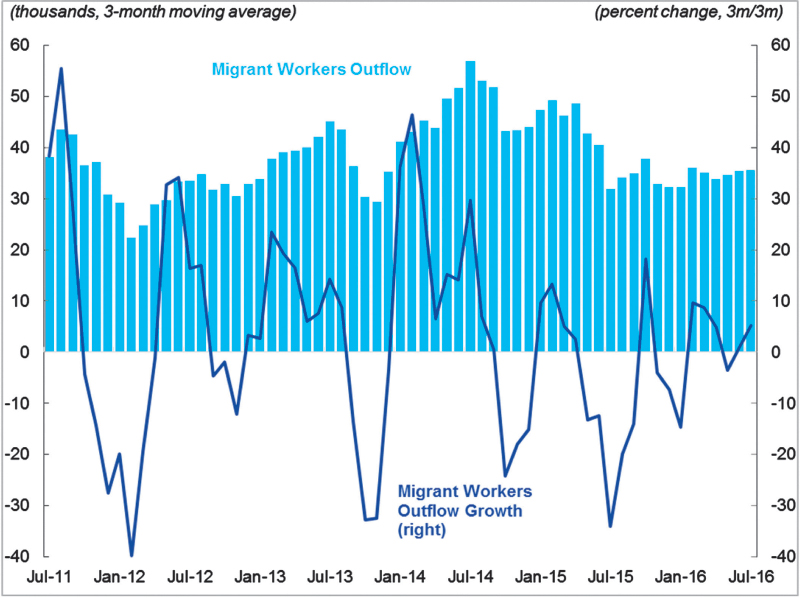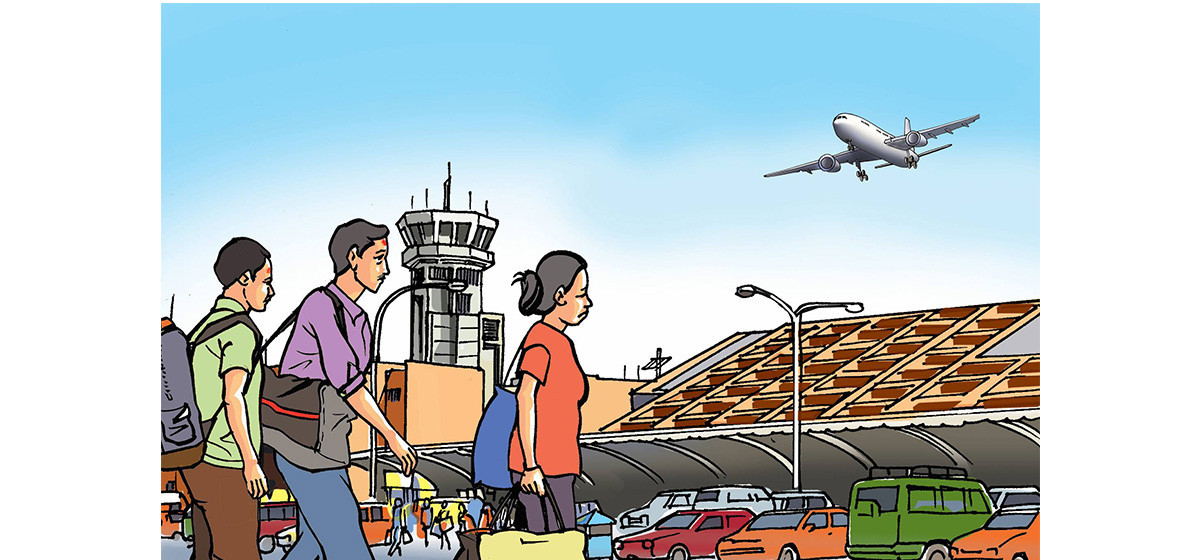
OR
Migrant worker departures settle at new low post quakes
Published On: October 8, 2016 07:54 AM NPT By: Ram Saran Tamang

KATHMANDU, Oct 7: The overall departures of migrant workers have settled at a new lower level since the devastating earthquake in April last year, according to the recently published Nepal Development Updates report of the World Bank.
From an average departure of 45,000 per month prior to April 2015, migrant worker departures have slowed and are now averaging 33,000 per month, the report stated.
Experts say the country’s economy will bear the brunt of the decline. As oil prices in particular, and commodity prices in general, are expected to remain at their current levels during the forecast period, the possibility of a slowdown in remittances remains, according to Sudyumna Dahal, country economist at World Bank Nepal.
“Given that remittances enable the consumption centric structure of the Nepalese economy and that the government relies on taxation of imports as a major source of revenue, even a modest contraction in remittances would have an adverse effect on growth and fiscal and external accounts, in addition to the impact on poverty reduction,” he added.
Both push and pull factors have contributed to this slowdown, the report highlighted. In the aftermath of the earthquake, potential migrants are increasingly choosing to stay at home to support their families with rebuilding homes and livelihoods.
Likewise, there has also been a weaker demand for workers from oil producing host countries, mostly Gulf Co-operation Council countries (GCC) like Kuwait, Bahrain, Iraq, Oman, Qatar, Saudi Arabia and the United Arab Emirates, where decline in international oil prices has dented incomes and weighed on fiscal balances.
The oil-exporting GCC and Malaysia are the destinations of almost 97 percent of Nepali migrants, excluding those going to India, and a key source of remittances.
The departure of migrant workers has remained stagnant in the fiscal year 2016. And despite some pickup at the end of the fiscal year, the growth rate remains negative when controlling for seasonal effects, the report further stated.
Economist Dahal said there is a need to urgently increase opportunities at home and increase capital spending in the short term.
“This spending could be directed towards a construction of a national irrigation system that not only buffers effects on growth, but also helps delink agricultural output from the effects of the monsoon.”
In the medium and long term, Nepal needs to move out from an inherently risky strategy of relying on a single driver for growth that is vulnerable to external shocks, according to him.
“While healthy migration and related remittance flows will continue to play an important role for external balance and disposable income support, Nepal will need to leverage its key resources – human and natural capital – to attract investment and lay the foundations for creation of opportunities and economic diversification at home,” Dahal further added.
You May Like This

Migrant worker dies in accident in Malaysia
KHOTANG, JULY 24: A Nepali migrant worker died in Malaysia after being hit by a car while trying to cross... Read More...

Nepali migrant worker found dead
RAJBIRAJ, July 11: A Nepali migrant worker from Bainali VDC – 9 of Saptari has been found dead in Qatar. Read More...



Just In
- 550,000 people acquire work permits till April of current fiscal year
- Fixing a win by outlawing dissent damages democracy
- MoHP cautions docs working in govt hospitals not to work in private ones
- Over 400,000 tourists visited Mustang by road last year
- 19 hydropower projects to be showcased at investment summit
- Global oil and gold prices surge as Israel retaliates against Iran
- Sajha Yatayat cancels CEO appointment process for lack of candidates
- Govt padlocks Nepal Scouts’ property illegally occupied by NC lawmaker Deepak Khadka









_20220508065243.jpg)



Leave A Comment